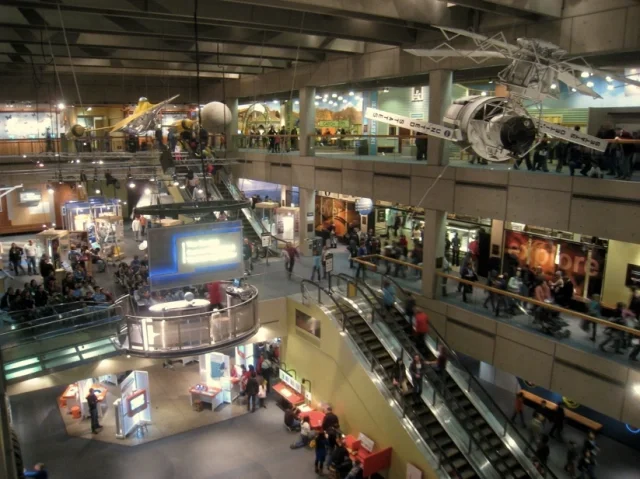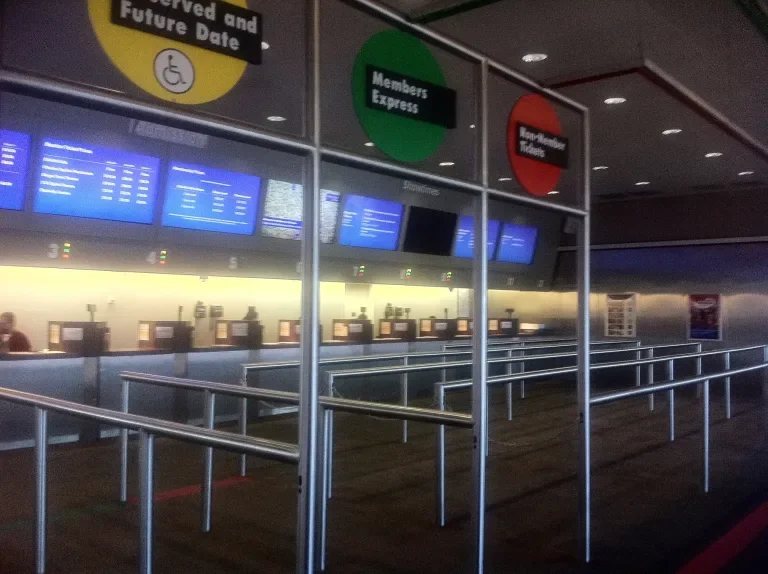A few years ago, I had the privilege of working with the Museum of Science in Boston on a transformative project. OHO had been awarded the work through an RFP, and my role was to lead customer research to inform a complete overhaul of the museum’s website.
The museum had three main goals:
Optimize ticket purchasing flows so fewer visitors had to stand in long lines.
Deepen engagement with exhibits by better integrating digital experiences.
Upgrade the design to align with the museum’s refreshed branding guidelines.
Boston Museum of Science
The Challenge
I knew from the outset that surveys and focus groups wouldn’t be enough. To really understand visitor behavior, I needed to observe it firsthand — on the museum floor, in real time. That meant field studies: standing with families in the ticket line, talking to visitors in the lobby, observing how people engaged with exhibits, and even watching how they used their phones as part of their museum experience.
Doing interviews and observations in a bustling museum environment required a blend of forthrightness and friendliness. I had a museum badge, which made me look official, but I still had to quickly identify people who were open to being interviewed. With families, I always made sure the adults were comfortable before starting a conversation.
The museum exhibit hall is an exciting and rather chaotic space that provides a confusing myriad of options for customers to explore. A better digital experience could have helped customers plan their visits.
Methods: Ethnography in Action
My approach combined ethnographic interviews and observational research:
Talking with visitors as they stood in line for tickets.
Observing families as they moved from one exhibit to another.
Asking people using their phones if I could see what they were doing (often trying to buy tickets or look up exhibit info).
I also spent time engaging visitors of different physical abilities. With blind visitors, for example, I conducted follow-up interviews where they showed me how they used screen readers to purchase tickets online. Their openness — and willingness to walk me through their tools — gave me invaluable insights into accessibility gaps.
The online ticketing system - which should have helped visitors avoid the long lines at the museum - was not optimized to help customers buy tickets quickly and easily. Interviewing customers and watching them struggle to buy tickets as they stood in line was enlightening.
Key Insights
A few patterns quickly became clear:
Visitors wanted to plan their visit — but couldn’t. The old website made it difficult to map out an experience in advance. People arrived without a clear idea of which exhibits would interest them most.
Ticketing frustrations were universal. Even when lines were long, many people gave up on the museum’s online ticketing process before completing a purchase. They almost always reached the agent before their phone transaction was finished — a clear sign the flow needed to be redesigned.
Accessibility was a bright spot — and a gap. Inside the museum, many exhibits had thoughtful tools for blind and hearing-impaired visitors. But the website did not match that level of accessibility, creating a fractured experience.
Strategic Outcomes
Based on these insights, our team recommended — and helped create:
A new sitemap that reflected how visitors actually searched and moved through information.
Simplified process flows for ticket purchasing, with fewer steps and clearer design.
Wireframes and graphic designs aligned with the museum’s refreshed brand.
The results:
More ticket purchases completed online.
Fewer people standing in line.
Stronger engagement across the museum’s digital properties.
It was a joyful experience to watch museum patrons - young and old alike - explore the wonderful exhbits that the museum provides.
Reflections
For me, this project was energizing because it took me out of the focus group room and into the field. Observing and talking to visitors in real time — families, tourists, people of all abilities — stretched my ethnographic research skills in new ways.
On a personal level, I’ve always loved the Museum of Science. Being able to contribute to its mission, even in a small way, was deeply rewarding. This project reinforced my core belief: great digital design begins with listening, observing, and truly understanding the people you’re designing for.
Jim Dalglish - Director of UX Research and Strategy
About the Author
Jim Dalglish is a strategist and researcher who helps organizations turn complexity into clarity. He specializes in qualitative insight, user experience, and the responsible use of AI in research. He’s worked across sectors — from education and healthcare to SaaS and the arts — and is passionate about making data more human.
When he’s not building GPTs or synthesizing interviews, you’ll probably find him writing plays, sailing his sailboat, or walking the Cape Cod coastline.
My Resume >>
My Portfolio >>






